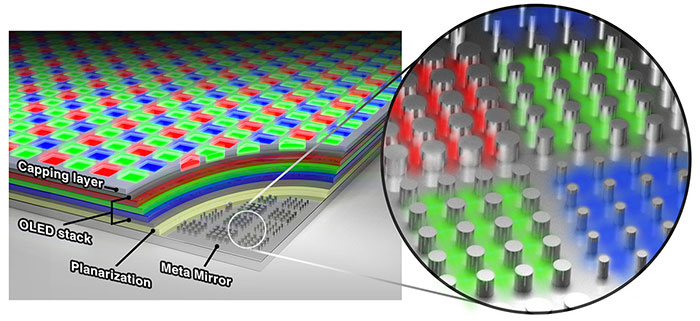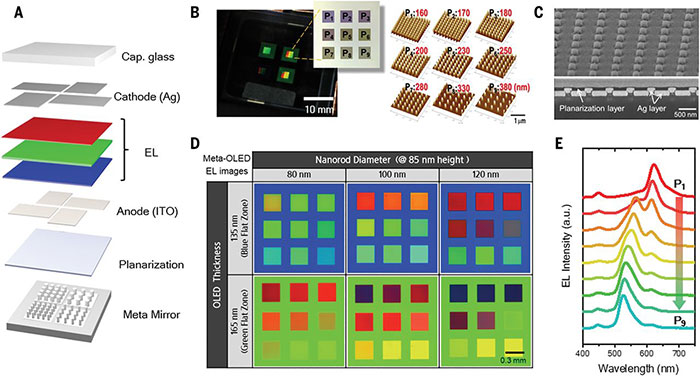In the not too distant future tech enthusiasts might be keenly discussing the merits of devices with 'metaphotonic OLED displays'. This is a new kind of OLED display which branched from research into ultra-thin solar panels. Key attractions of the new metaphotonic OLED displays are their very high pixel densities (up to 10,000ppi), as well as being brighter and offering "better colour accuracy," than existing OLED tech.

To create ultra thin and efficient solar panels Stanford University materials scientist Mark Brongersma decided to try and take advantage of the fact that, "on the nanoscale, light can flow around objects like water". The theory has worked really well in solar panel design and thanks to some lateral thinking by Won-Jae Joo, a Stanford visiting scientist from the Samsung Advanced Institute of Technology (SAIT), it looks like the nanoscale tech will impact the OLED display market.
"The crucial innovation behind both the solar panel and the new OLED is a base layer of reflective metal with nanoscale corrugations, called an optical metasurface," explains the Stanford News blog. "The metasurface can manipulate the reflective properties of light and thereby allow the different colours to resonate in the pixels. These resonances are key to facilitating effective light extraction from the OLEDs."
Having all the pixels of the same height makes the manufacturing process simpler and aids large-scale as well as micro-scale fabrication. In tests of early lab made metaphotonic OLED displays, Brongersma and SAIT researchers have created pixels with a higher colour purity and a twofold increase in luminescence efficiency compared to TV OLED tech (colour-filtered white-OLEDs).

Samsung is currently busying itself creating a full-sized display using this new nanoscale tech. The metaphotonic OLED displays are expected to become particularly appealing in devices such as HMDs where the display is situated very close to the eye and high ppi figures are particularly welcome.






